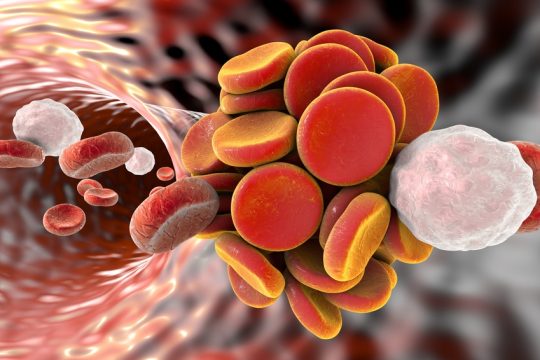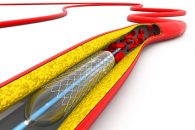Peripheral artery disease (PAD) is no longer a systemic manifestation of atherosclerosis. In fact, 2 in 3 people with PAD have concomitant heart disease, and 1 in 3 people has concomitant PAD. To understand the real dimension of this problem, we should know that PAD patients have 60% more risk of acute myocardial infarction…
Transradial access shows no benefit of bivalirudin
The aim of this study was to compare bivalirudin against heparin in patients with ST elevation acute myocardial infarction undergoing transradial primary PCI. Both bivalirudin and the transradial access are strategies aimed at reducing bleeding complications in patients undergoing acute MI. However, the benefit of their combined use is not year clear. Even though…
Leaders Free ACS: Good Results for the Polymer-Free Stent at 2 Years in ACS
Courtesy of the SBHCI. Guidelines recommend dual antiplatelet therapy for a year in patients admitted with coronary acute syndrome. However, patients at high risk for bleeding who receive coronary angioplasty have been historically excluded from studies. The new polymer-free stent BioFreedom allows for the reduction of dual antiplatelet therapy time, due to rapid drug elution…
TOPIC: Benefits of Switching Dual Antiplatelet Therapy in Patients with ACS
Newer P2Y12 blockers are the front-line treatment and dual antiplatelet therapy is indicated for 1 year after acute coronary syndrome (ACS). Both prasugrel and ticagrelor offer more ischemic benefit than clopidogrel during the initial phase; however, bleeding complications could increase in the long term. The objective of this study was to assess the safety and efficacy…
Dual antiaggregation time and death by bleeding
Despite the fact that some randomized studies and meta-analyzis have suggested prolonged dual antiaggregation could be associated to increased death rate, the underlying mechanism remains unclear. It is only logical to assume that if there was an actual increase in mortality associated to prolonged antiaggregation, this should be due to bleeding; however, no studies have…
Anticoagulated Patients with Atrial Fibrillation Undergoing Angioplasty: How to Treat Them
In patients with atrial fibrillation undergoing coronary angioplasty with stents, standard anticoagulation with vitamin K antagonists plus dual antiplatelet therapy with a P2Y12 inhibitor and aspirin reduces the risk of stent thrombosis and stroke, but increases the risk of bleeding. The effectiveness and safety of anticoagulation with rivaroxaban plus one or two antiplatelet agents…
Cardiovascular Events Reduction: Bivalirudin or Heparin?
The MATRIX study did not find a clear advantage of bivalirudin over unfractioned heparin to reduce major adverse cardiovascular events (MACE) or net cardiovascular adverse events (NCAE) in patients undergoing acute coronary syndrome receiving PCI. This new analyzis confirms there is no difference in ischemic and thrombotic events in patients with acute coronary syndrome…
Is It Safe to Discontinue Ticagrelor One Day Before CABG?
Courtesy of Dr. Agustín Vecchia. Nearly 10% of patients with acute coronary syndrome (ACS) require surgery. Managing periprocedural dual antiplatelet therapy (DAPT) in ACS patients is controversial and, to date, there are no randomized trials in this regard. Guidelines recommend ticagrelor discontinuation five days prior surgery and in the most emblematic work on this drug…
Procedural Complexity Affects Decision-Making Regarding DAPT Duration
Much of the speculation around the way of individualizing dual antiplatelet therapy (DAPT) duration after coronary angioplasty has focused on clinical parameters (e. g., diabetes), but a new study published by the Journal of the American College of Cardiology (JACC) and presented at the last European Society of Cardiology (ESC) Congress warns about anatomical factors as…
Andexanet Alfa: a Good Antidote against Anti Xa Agents
Andexanet alfa induces rapid reversion of Xa inhibitor effect in patients with active major bleeding, according to preliminary observations of the ongoing study ANNEXA-4, currently randomizing patients. This work was presented in Rome in the context of the European Society of Cardiology annual meeting, and simultaneously published in the New England Journal of Medicine.…









